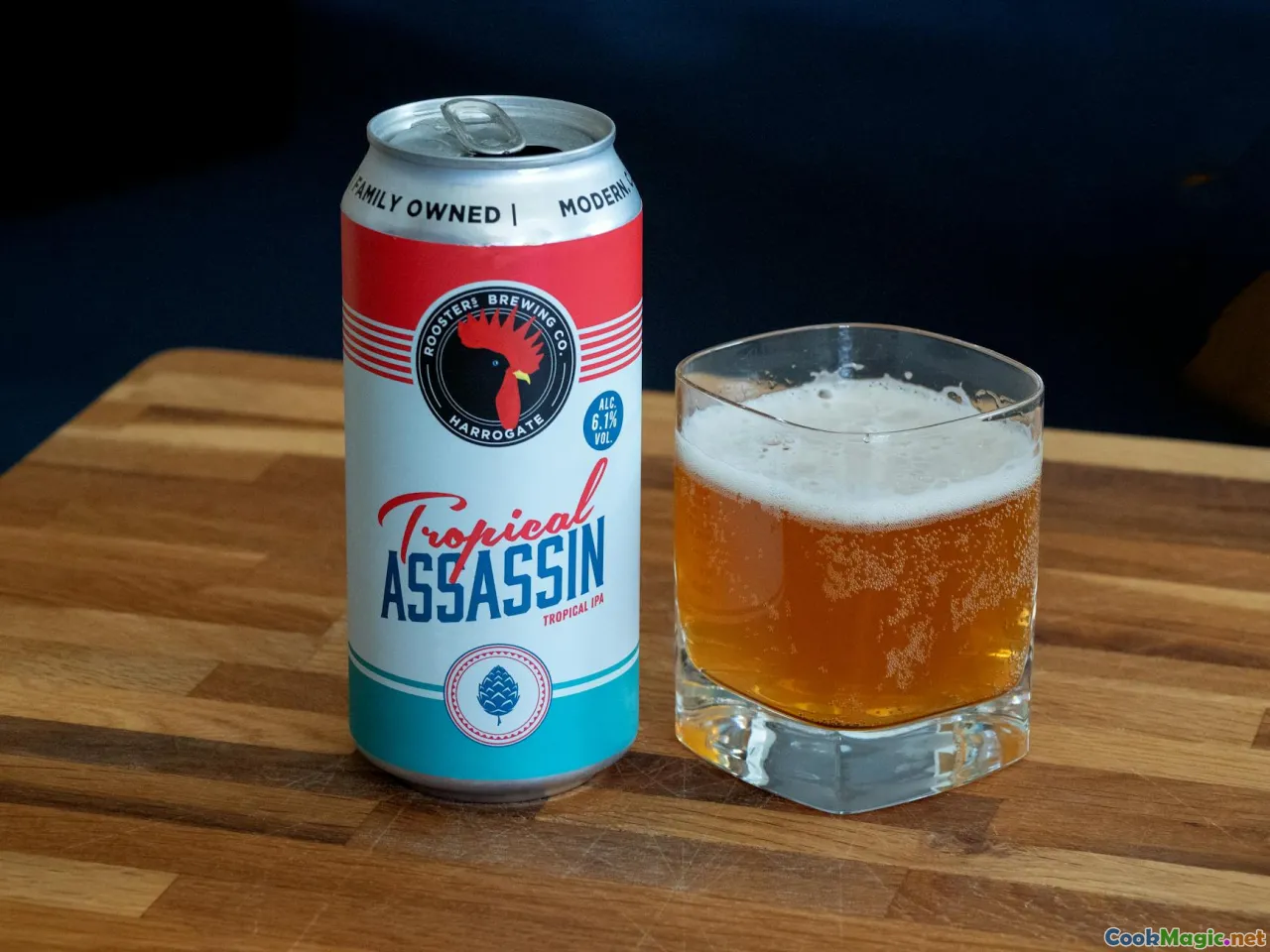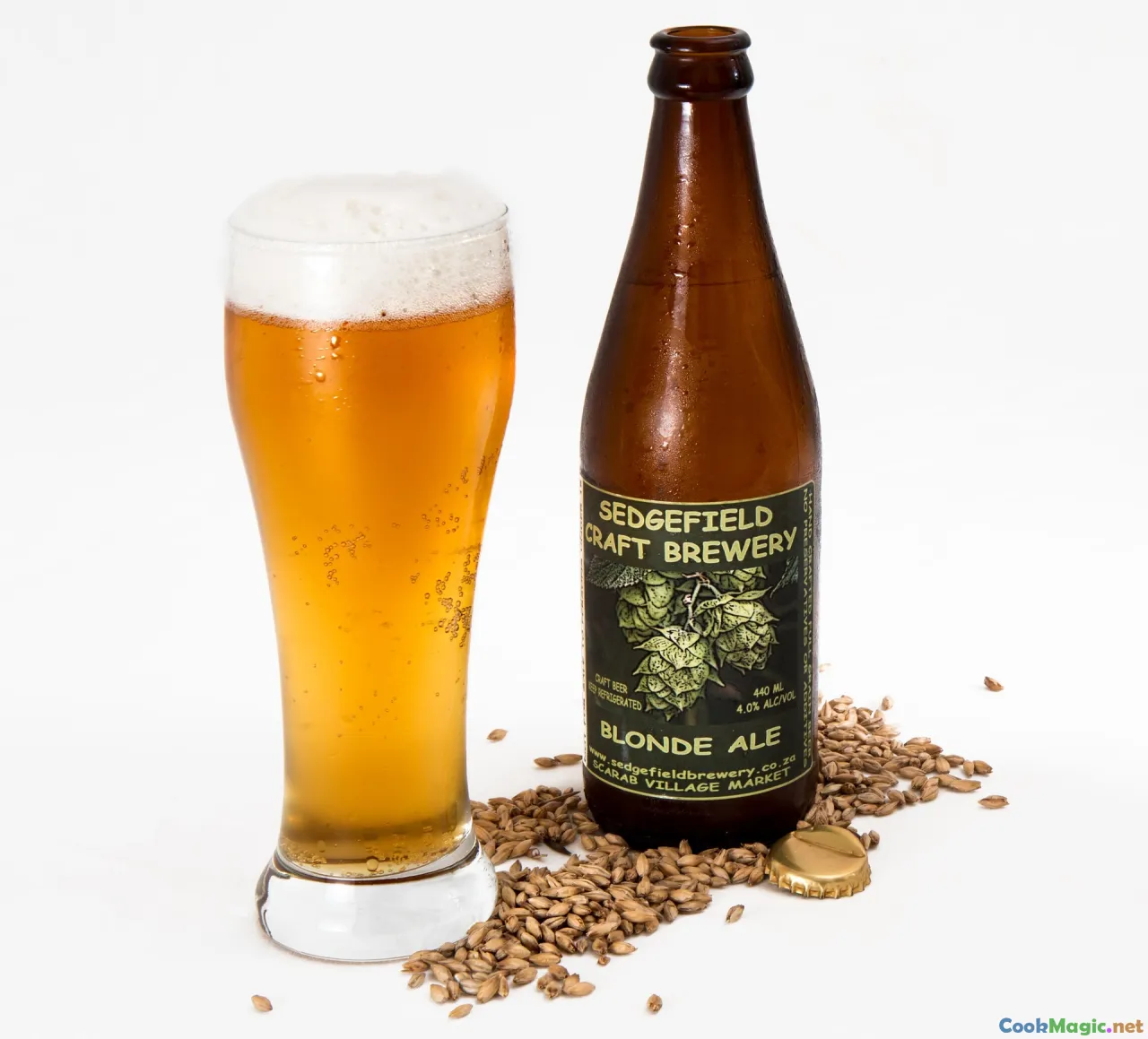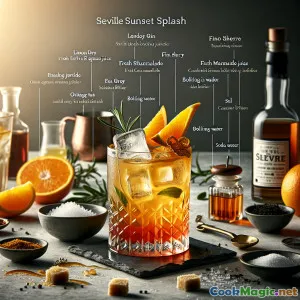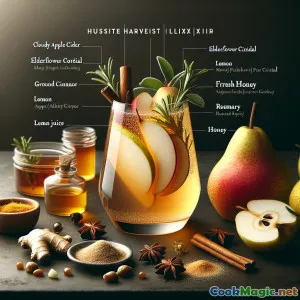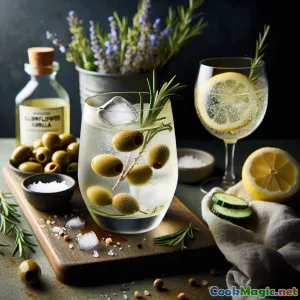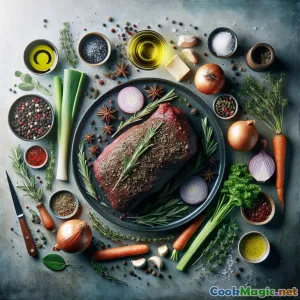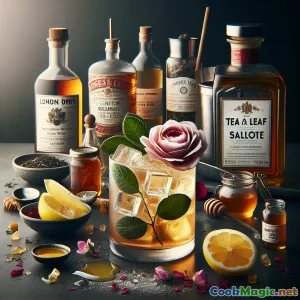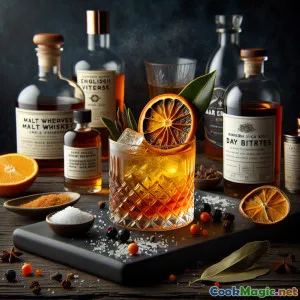
Malt Wharves Reverie: Bersulang untuk Pantai Inggris
(Malt Wharves Reverie: A Toast to English Waterside)
(0 Ulasan)0
981
Juli 23, 2025
Laporkan Masalah
Bahan
-
45 ml Whiskey malt Inggris
(Preferably single malt for complexity)
-
90 ml Bir Inggris Pucat
(Choose a lightly hoppy, floral ale)
-
15 ml Dry vermouth
(Adds a subtle herbal note)
-
1 leaf Daun salam
(Fresh for vibrancy, or dried)
-
2 dashes Bitters jeruk
(Adds a gentle citrus backbone)
-
7 ml Sirup Gula Demerara
(Simple syrup as substitute, but demerara ideal)
-
1 pinch serpihan garam laut
(Brings maritime complexity)
-
1 strip Kulit jeruk segar
(Untuk hiasan dan aroma)
(Preferably single malt for complexity)
(Choose a lightly hoppy, floral ale)
(Adds a subtle herbal note)
(Fresh for vibrancy, or dried)
(Adds a gentle citrus backbone)
(Simple syrup as substitute, but demerara ideal)
(Brings maritime complexity)
(Untuk hiasan dan aroma)
Nutrisi
- Porsi: 2
- Ukuran Porsi: 1 medium rocks glass (220ml)
- Calories: 185 kcal
- Carbohydrates: 9 g
- Protein: 0.5 g
- Fat: 0.1 g
- Fiber: 0 g
- Sugar: 5 g
- Sodium: 42 mg
- Cholesterol: 0 mg
- Calcium: 13 mg
- Iron: 0.1 mg
Instruksi
-
1 - Infuse Vermouth with Bay:
In a small glass, soak the bay leaf in dry vermouth for 3–5 minutes to impart its aromatics. Discard leaf, saving infused vermouth.
-
2 - Build the Cocktail:
In a chilled mixing glass, add the whiskey, infused vermouth, demerara syrup, and orange bitters.
-
3 - Mix and Dilute:
Fill the glass with cubed ice. Stir for at least 30 seconds until well chilled and properly diluted.
-
4 - Layer Ale and Finale:
Strain into two rocks glasses filled with fresh ice. Gently top with pale ale, pouring slowly for a refined froth.
-
5 - Garnish and Serve:
Express the orange peel over each drink and tuck into the glass. Float an optional bay leaf or a touch of flaky sea salt.
In a small glass, soak the bay leaf in dry vermouth for 3–5 minutes to impart its aromatics. Discard leaf, saving infused vermouth.
In a chilled mixing glass, add the whiskey, infused vermouth, demerara syrup, and orange bitters.
Fill the glass with cubed ice. Stir for at least 30 seconds until well chilled and properly diluted.
Strain into two rocks glasses filled with fresh ice. Gently top with pale ale, pouring slowly for a refined froth.
Express the orange peel over each drink and tuck into the glass. Float an optional bay leaf or a touch of flaky sea salt.
Informasi Lebih Lanjut: Malt Wharves Reverie: Bersulang untuk Pantai Inggris
The Story, Craft, and Charisma of 'Malt Wharves Reverie'
If you've ever wandered the atmospheric banks of a fog-laden English river, past brick arches and creaking jetties, you will have encountered a distinct sensory mélange—oak barrels stacked high, smoke wafting over wet stone, the faint tang of malt lingering in the air. These elements, so integral to England’s long standing relationship with spirits and ales, inspired the creation of 'Malt Wharves Reverie.'
This completely original cocktail borrows its name from the historic waterside districts that spawned English river trade, malt houses, and eventually, fine brewing and whisky industries. Each element in this drink evokes a strand of English beverage heritage: smoky malt whiskey drawing from ancient distillers, pale ale recalling blooming Victorian hop fields, bay leaf a nod to seaside breezes, and inflected with bitters and simple syrup as the bridge between classic and modern bar craft.
Cultural and Historic Significance
The fusion of malt whisky and pale ale is quintessentially British; the term 'boilermaker' comes to mind, but here the pairing is refined, harmoniously interlaced rather than a blunt juxtaposition. In the 19th and early 20th century, English dock and wharf districts were not only economic engines but also hubs for socializing, drinking, and culinary creativity. Malt—a grain transformative to both beer and whisky—spread through these communities as part of daily ritual and celebration.
Whiskey with ale, underpinned with hints of maritime flair (the bay leaf and salt) and citrus flourish from orange bitters and fresh peel, make this a transporting experience. The glass becomes a timeworn timber wharf—saline spray in the air, barrels at rest, the warmth of an unhurried evening chat among friends.
Unique Aspects and Refined Technique
What sets 'Malt Wharves Reverie' apart is its subtle complexity and reference to place: rather than heavy-handed or saccharine notes, it deftly weds whiskey’s richness and dried fruit edges to the lilting florals of a pale ale. Bay leaf, seldom seen in drinks outside of certain Mediterranean concoctions, imparts something elusive—herbal, green, holding back a little sea-scented mystery.
To achieve the ideal balance, the infusion of dry vermouth with a bay leaf leads the tasting journey. Allowing the leaf to saturate vermouth (which is itself botanically complex) provides an herbal backbone, more aromatic and layered than simply shaking a sprig into the finished drink. The dash of orange bitters hints at reinvented classic cocktails, adding periodic flickers of piquant sunlight amidst malt’s brown-leather comfort.
The crowning pale ale pour, adorned with flecks of rising foam, ties the drink visually and aromatically back to pub heritage. Gentle incorporation maintains body and chill without runaway carbonation or flatness. And while the optional touches of flaky sea salt and bay refer literally to England’s rivers meeting the sea, fresh orange peel does double duty as both nautical signal and aromatic garnish, releasing vivid oils across the creamy head of the cocktail.
Tips, Hacks & Serving Suggestions
- Choose your English whiskey (or whisky) thoughtfully—too peaty can overpower, while something too delicate may hide.
- For the ale, choose something cask-gaff dark-gold, less than 4.5% ABV, citrus-accented but not dominating. Avoid excessive carbonation.
- Demerara syrup offers a depth white sugar lacks, mimicking the caramelly sweetness found in real pub ales and bringing coherence across flavors.
- Garnishes can be played with: lemon peel provides a different lift, rosemary for greater evergreen smokiness.
Serve by the river (if possible), accompanied by strong English cheeses or simply stout-hearted conversation. Cheers to the memory of malt, the enduring flow of rivers, and rediscovered stories shared at the wharves.

